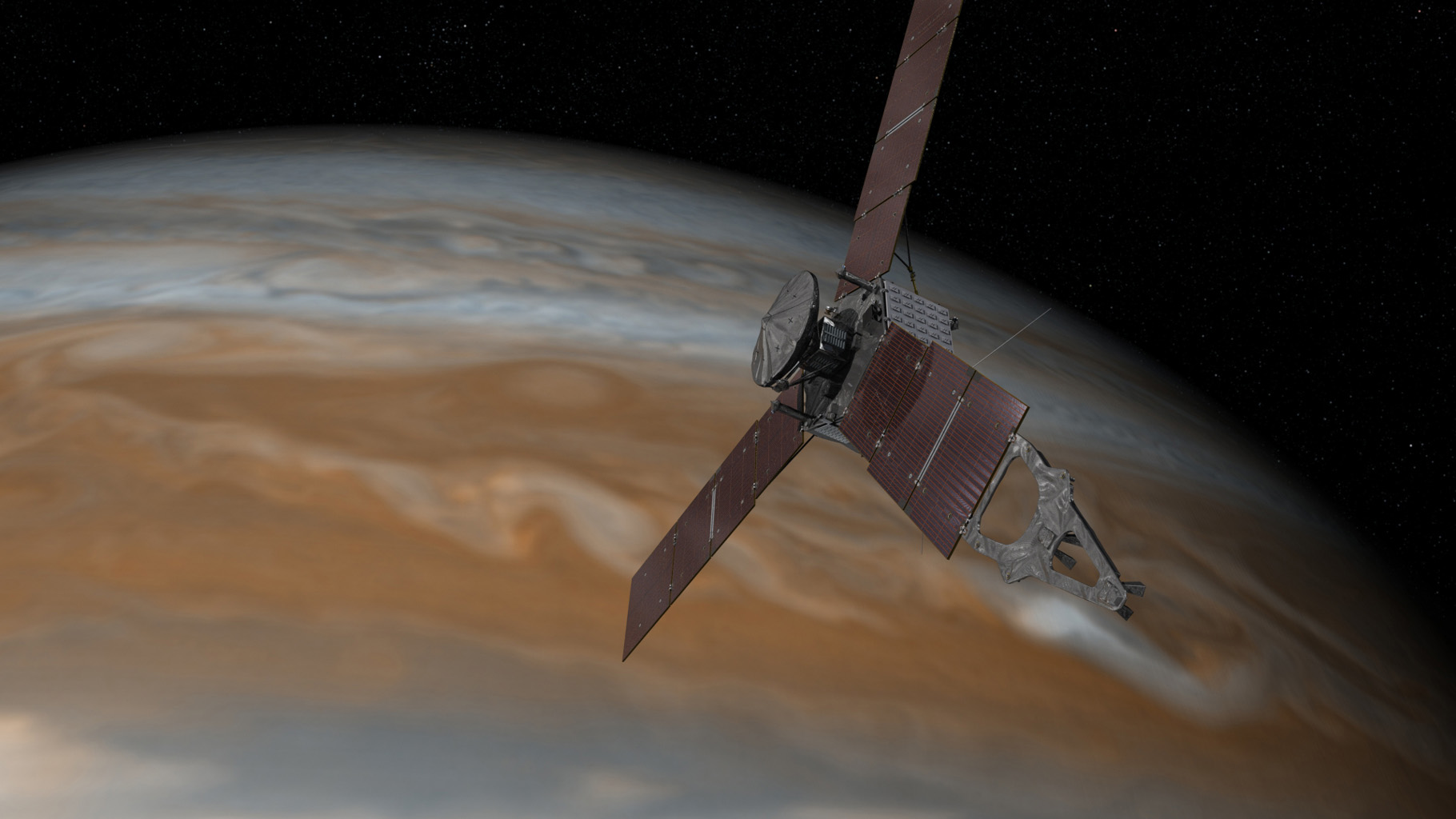
A NASA spacecraft's five-year trek to Jupiter is nearly over.
The $1.1 billion Juno probe, which launched in August 2011 on a mission to investigate Jupiter's structure, composition and formation history, is scheduled to begin orbiting the gas giant on July 4.
"We're just a couple of weeks from arriving at Jupiter," Juno principal investigator Scott Bolton, of the Southwest Research Institute in Boulder, Colorado, said during a news conference today (June 16). "It's been such a great journey, and I can't wait to get there." [Photos: NASA's Juno Mission to Jupiter]
The excitement is tinged with anxiety, however. Juno will fire its main engine for 35 minutes on the evening of July 4, essentially slamming on the brakes to slow down enough to get captured by Jupiter's gravity.
If something goes wrong during this crucial maneuver, the spacecraft will zoom right past the giant planet, mission team members said.
"It's a one-shot deal. I mean, the whole thing's riding on this JOI — Jupiter orbit insertion — activity on July 4," Bolton said. "Somebody asked, 'When does the nail-biting start?' It's already started."
If everything goes according to plan on July 4, Juno will be captured into a 53-day orbit. Additional engine burns will eventually get the probe into its elliptical, 14-day science orbit, during which Juno will get as close as 2,700 miles (4,350 kilometers) to Jupiter's cloud tops.
Breaking space news, the latest updates on rocket launches, skywatching events and more!
Over the course of more than 30 orbits, Juno will use its nine science instruments to study the planet's composition, magnetic field and gravity field, among other things. (The instruments' core electronics, and Juno's flight computer, are tucked inside a 400-lb. [180 kilograms] titanium vault to shield them from the intense radiation environment at Jupiter.)
The spacecraft's observations will reveal a great deal about how Jupiter formed and evolved — information that should have broader applicability, Bolton said.
"One of the primary goals of Juno is to learn the recipe for solar systems," he said. "It's not just our solar system, but how do you make the planets that we discover in other solar systems?"
Jupiter was the first planet in Earth's solar system to form, "so it gives you that very first step in the recipe: What happened after the sun formed that allowed the planets to form?" Bolton said.
The Juno mission is scheduled to end in February 2018, with an intentional death dive into Jupiter's thick atmosphere. The probe's fiery death is designed to make sure that Juno never contaminates any potential life-supporting worlds, such as Jupiter's ocean-harboring moon Europa, NASA officials said.
Follow Mike Wall on Twitter @michaeldwall and Google+. Follow us @Spacedotcom, Facebook or Google+. Originally published on Space.com.
Join our Space Forums to keep talking space on the latest missions, night sky and more! And if you have a news tip, correction or comment, let us know at: community@space.com.

Michael Wall is a Senior Space Writer with Space.com and joined the team in 2010. He primarily covers exoplanets, spaceflight and military space, but has been known to dabble in the space art beat. His book about the search for alien life, "Out There," was published on Nov. 13, 2018. Before becoming a science writer, Michael worked as a herpetologist and wildlife biologist. He has a Ph.D. in evolutionary biology from the University of Sydney, Australia, a bachelor's degree from the University of Arizona, and a graduate certificate in science writing from the University of California, Santa Cruz. To find out what his latest project is, you can follow Michael on Twitter.
